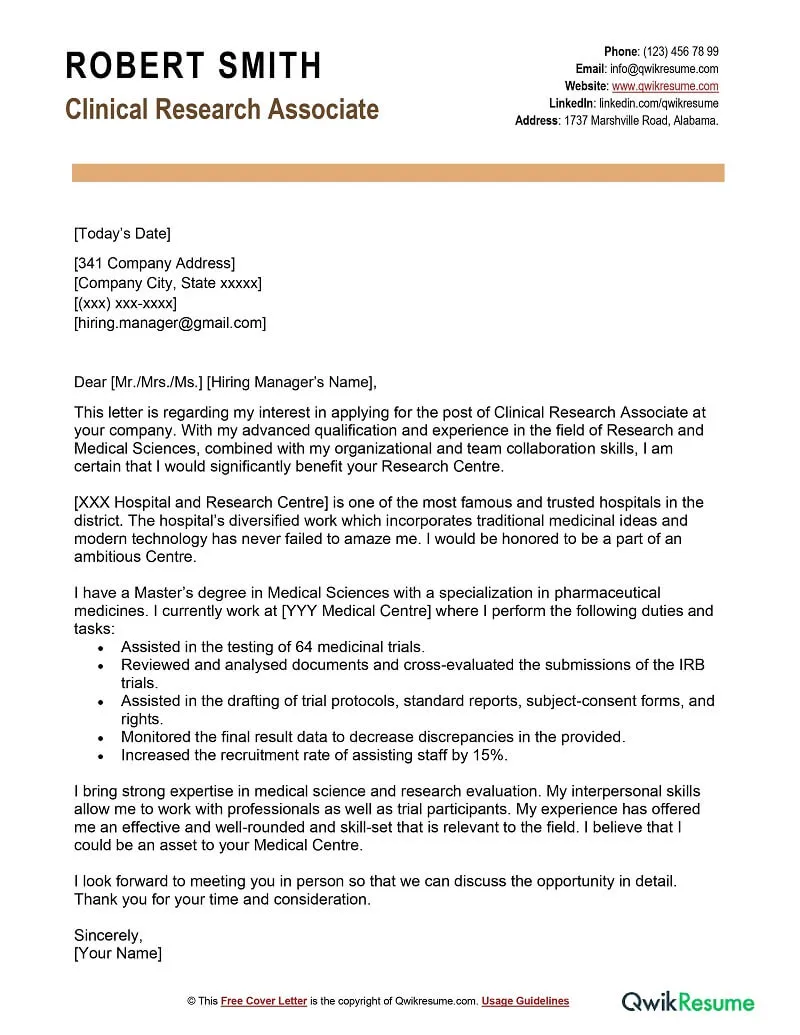Crafting a Stellar Research Associate Cover Letter
A compelling cover letter is your first chance to impress a potential employer and secure a Research Associate position. It’s more than just a formality; it’s an opportunity to showcase your skills, experience, and enthusiasm for the role. A well-crafted cover letter complements your resume by providing context and personality, allowing you to distinguish yourself from other applicants. It should be tailored to the specific job and highlight the most relevant aspects of your background that align with the employer’s needs. In essence, a strong cover letter tells a story about your professional journey and why you are the ideal candidate. Remember, the goal is to make the hiring manager want to learn more about you.
Highlighting Your Skills and Experience
The core of your cover letter should be a clear and concise presentation of your skills and experience. Begin by identifying the key requirements mentioned in the job description. These might include specific research methodologies, software proficiency, or lab techniques. Then, provide concrete examples from your past experiences, such as previous research projects or academic endeavors, where you successfully utilized these skills. Use action verbs to describe your accomplishments. For instance, instead of saying “Assisted with data analysis,” write “Analyzed complex datasets using statistical software, resulting in…”. By illustrating your capabilities with tangible evidence, you demonstrate your preparedness for the Research Associate role.
Quantifying Achievements and Impact
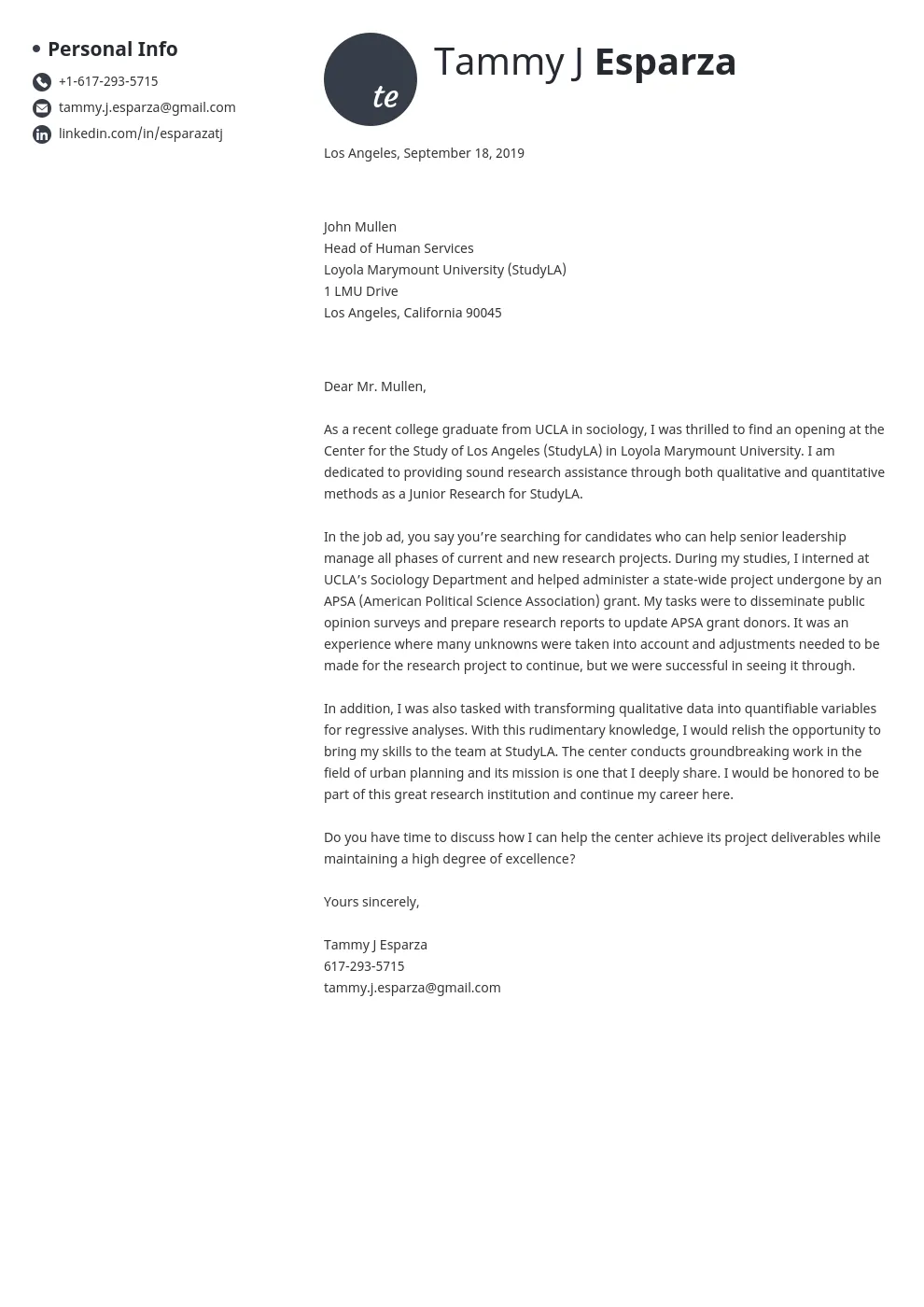
Whenever possible, quantify your achievements to provide a clear understanding of your impact. Instead of simply stating that you managed a project, explain the project’s scope, your role, and the outcome. Did you successfully complete a project ahead of schedule? Did your contributions lead to cost savings or improved efficiency? Did you contribute to a publication or presentation? Include specific metrics to support your claims. This could involve the number of participants in a study, the percentage of improvement in a process, or the number of publications you co-authored. Quantifiable data lends credibility to your claims and demonstrates the tangible value you bring to the table. Use numbers whenever you can; they speak volumes.
Demonstrating Your Research Interests
Research Associate positions often involve specific areas of study. Your cover letter provides an excellent opportunity to showcase your passion for the field and your understanding of the research area. Research the lab or department to which you are applying. Identify their current projects, publications, and areas of focus. Then, articulate how your research interests align with their work. Mention specific projects or methodologies that resonate with you. Explain how your background complements the research team and how you envision contributing to their goals. This shows the hiring manager that you’ve done your homework and that you’re genuinely enthusiastic about the opportunity. Showing a genuine interest often makes the difference.
Tailoring Your Letter to the Specific Job
A generic cover letter will not impress a hiring manager. It’s crucial to tailor each cover letter to the specific job you are applying for. Carefully review the job description, identifying the key skills, qualifications, and experiences the employer is seeking. Then, ensure that your cover letter addresses each of these points. Customize your examples to match the requirements outlined in the job description. If the job emphasizes teamwork, be sure to highlight your collaborative experiences. If the job focuses on a particular methodology, highlight your expertise in that area. This level of customization shows the employer that you have taken the time to understand their needs and that you are a strong fit for the position. Demonstrate you are the best match.
Showcasing Your Soft Skills
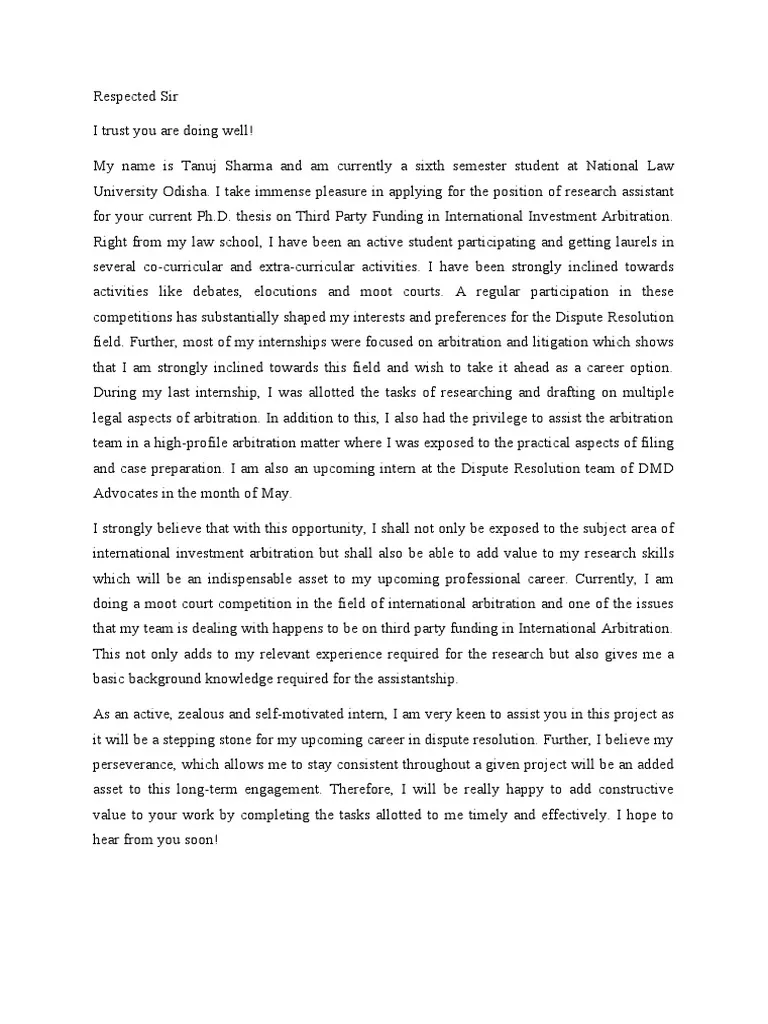
While technical skills are important for a Research Associate, so are soft skills. These are the interpersonal abilities that help you work effectively within a team and manage your responsibilities. Highlight skills like communication, problem-solving, time management, and adaptability. Provide specific examples of how you have demonstrated these skills in previous research settings. For instance, describe how you successfully communicated complex research findings to a non-technical audience, or how you creatively solved a problem that arose during a project. Soft skills are often just as important as hard skills in research and should be highlighted to illustrate your well-rounded nature as a professional.
Communication and Teamwork
Research is often a collaborative effort, so teamwork and communication skills are essential. In your cover letter, provide examples of your ability to work effectively within a team. Did you contribute to group projects? Did you present your findings at conferences or meetings? Describe your role within the team and the results you achieved. Highlight your ability to communicate complex information clearly and concisely, both verbally and in writing. Mention any experience you have in writing reports, presenting data, or giving presentations. Your ability to clearly express your ideas, contribute to the team, and collaborate with others are major assets.
Attention to Detail and Organization
Research requires meticulous attention to detail and strong organizational skills. Emphasize how you maintain accuracy and precision in your work. Describe your methods for managing data, organizing lab experiments, or adhering to protocols. Mention any experience you have in maintaining detailed records, following research procedures, or ensuring the integrity of your work. Provide concrete examples of how you use organizational skills to make certain the projects are completed on time. For example, did you create a system for tracking samples, or did you implement a new protocol that improved efficiency? Highlighting your attention to detail and organization demonstrates your ability to be reliable and effective in your role.
Formatting and Structure
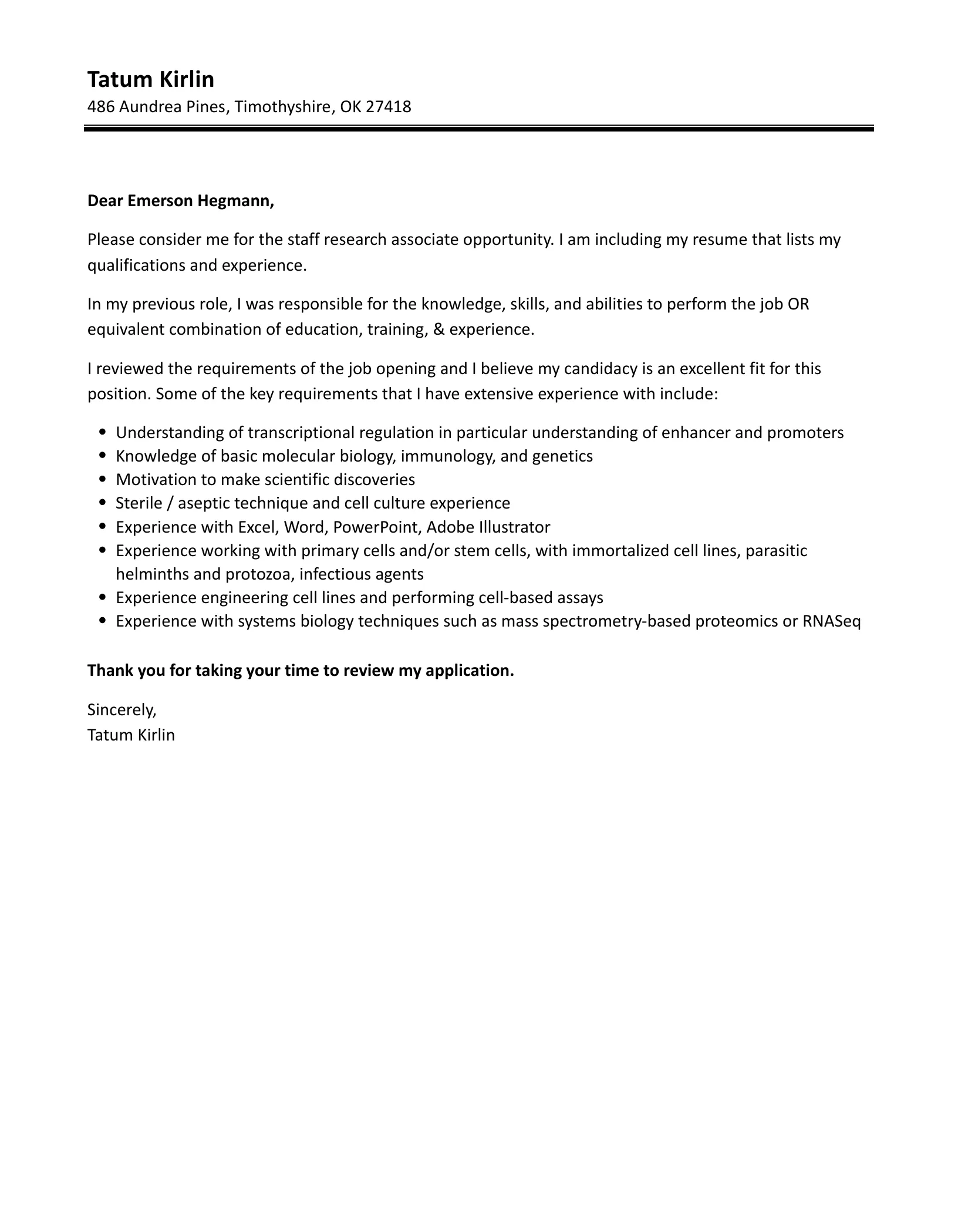
The formatting and structure of your cover letter can significantly impact the reader’s impression. A well-formatted letter is easy to read and demonstrates your professionalism and attention to detail. Use a standard business letter format, with a clear heading, salutation, body paragraphs, and closing. Choose a readable font and use appropriate spacing to enhance readability. Keep paragraphs concise and focused, and use bullet points or lists to highlight key information. The layout should be clean and uncluttered, allowing the reader to quickly grasp the essential points of your application. Aim for a professional and easy-to-follow presentation.
Header and Contact Information
The header of your cover letter should include your contact information, such as your name, address, phone number, and email address. Make sure this information is up-to-date and professional. Also, include the date and the recipient’s contact information (name, title, department, and address) if known. Use a professional email address. Double-check that all details are correct to ensure that the employer can easily reach you. Presenting this information clearly in the header sets the tone for the rest of your letter.
Professional Salutations and Closings
Start your cover letter with a professional salutation, such as “Dear Dr. [Last Name]” or “Dear Hiring Manager.” If you do not know the hiring manager’s name, it is generally acceptable to use “Dear Hiring Committee” or “Dear Search Committee.” Always tailor the salutation to the specific opportunity. End your letter with a formal closing, such as “Sincerely,” “Respectfully,” or “Best regards.” Include your typed name below the closing. Avoid casual salutations or closings. Use professional, polite, and appropriate language throughout the letter. Such attention to these details demonstrates professionalism.
Proofreading and Editing
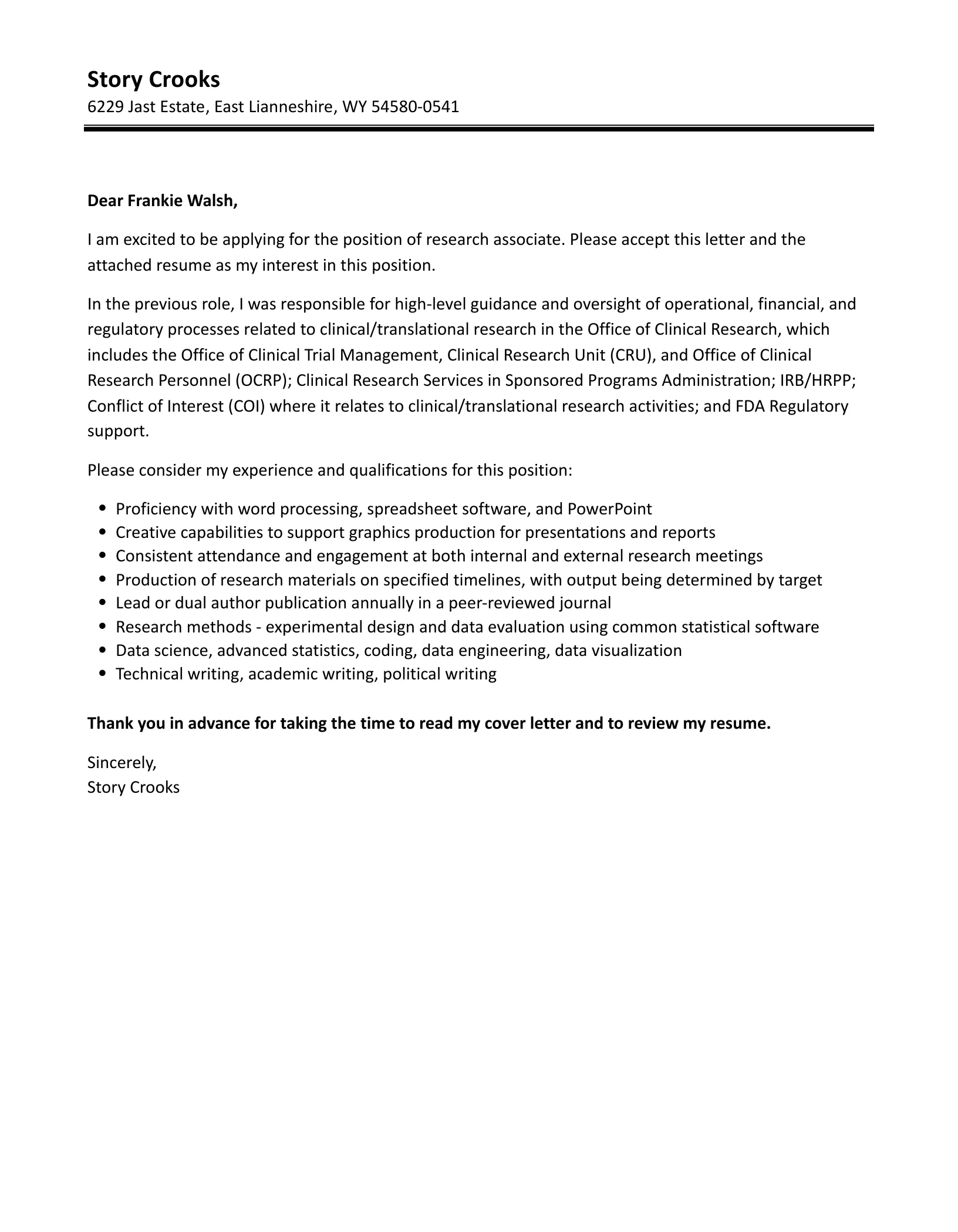
Proofreading and editing are crucial steps in the cover letter writing process. Thoroughly review your letter for any spelling, grammar, or punctuation errors. Errors can create a negative impression and might make your application dismissed. Consider having a friend, career counselor, or professor review your letter for any errors or improvements. Proofread your letter multiple times to catch any errors. Ensure the letter is clear, concise, and error-free. The absence of errors greatly boosts your chances of securing the Research Associate role.
Making a Positive First Impression
Your cover letter should leave a positive and lasting impression. It is your first chance to introduce yourself to a potential employer, and the first paragraph sets the stage. Begin with a strong opening statement that captures the reader’s attention. Show enthusiasm for the position and the organization. Clearly state the position you are applying for and how you learned about the opportunity. The opening paragraph should clearly state the position and generate interest in your application, encouraging the reader to review the full content of your cover letter. Your first impression can be the most important part, so be sure it is a good one.
Emphasizing Your Enthusiasm
Demonstrate your enthusiasm for the role and the organization throughout your cover letter. Explain what interests you about the research, the lab, or the company. Convey your excitement about the opportunity to contribute to their work. Research the company’s mission, values, and current projects to highlight your understanding of their goals. Avoid generic statements and express your genuine interest in joining their team. Enthusiasm makes you stand out. Show you want the job and you are passionate about the research.
Summarizing Your Key Qualifications
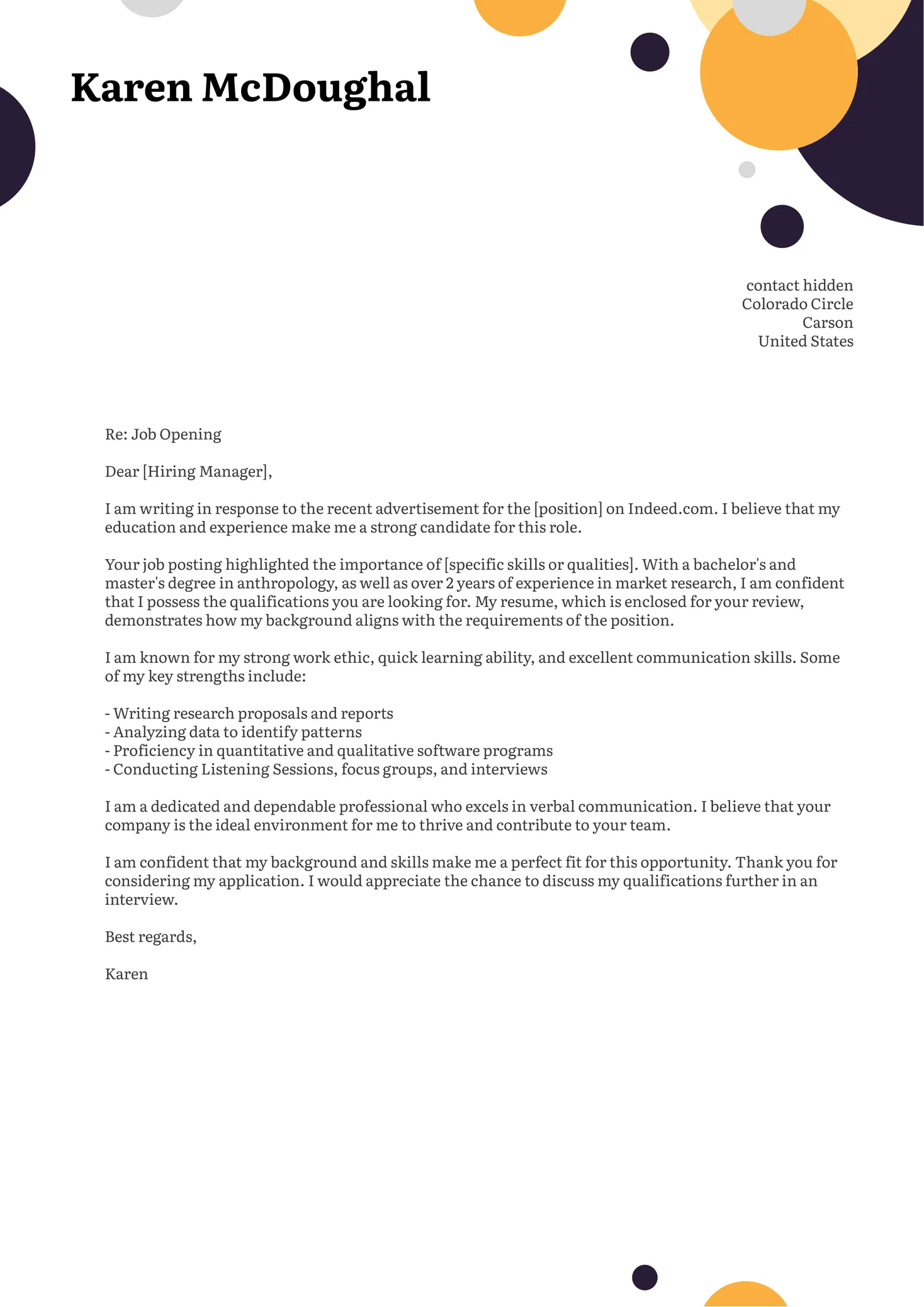
Conclude your cover letter by summarizing your key qualifications and reiterating your interest in the position. Restate your skills and experience that best align with the job description. Thank the hiring manager for their time and consideration, and express your enthusiasm for the opportunity to discuss your qualifications further. Include a call to action, such as “I look forward to hearing from you” or “Thank you for your time. I can be reached at…” Reiterate your interest in the position in a compelling way. End with a confident statement that you are the right candidate and are available to answer any questions.
